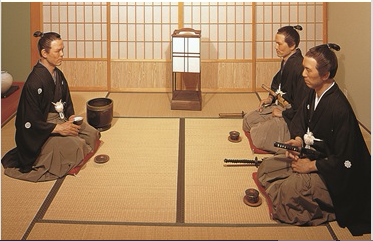I have been speaking and writing about “The Ryoma Phenomenon” for most of this summer. But it seems certain that there would not have been a “Ryoma Phenomenon” at all without Katsu Kaishu, “the shogun’s last samurai” of my book, Samurai Revolution: The Dawn of Modern Japan Seen Through the Eyes of the Shogun’s Last Samurai.

When Ryoma fled his native domain of Tosa in the spring of 1862, thus becoming a ronin, he was still very much a man of the sword: i.e., determined to bring down the Bakufu my military force. And he still had strong anti-foreign leanings. In the future, of course, he would devise a plan for the bloodless overthrow of the Bakufu to avoid dangerous civil war and preserve national sovereignty against Western imperialism to usher in the modern age. This vision began to take shape in Ryoma’s mind around the end of 1862, under the Katsu Kaishu’s tutelage. Kaishu was a high-ranking naval officer in the Bakufu. He was a founder of the Japanese Navy who had sailed to San Francisco as captain of the first Japanese vessel to reach the United States in March 1860. Ryoma, meanwhile, was a political outlaw for having fled Tosa, and a known anti-Bakufu activist.

Assassination was rampant at the time. According to Kaishu’s recollection of his first meeting with Ryoma, which took place at Kaishu’s home in Edo, Ryoma intended to kill him. (This depiction of the meeting is from the Ryoma History Museum in Kochi. It is one of a series of depictions of Ryoma’s life using wax figures.)
Of course, Ryōma did not kill Kaishu. Instead, he listened closely as Kaishu spoke of the futility of trying to defend against Western imperialism without a navy, for which Japan needed Western technology. He said that the navy must recruit capable young men from all over Japan, regardless of social class, and not only the privileged elite – radical ideas coming from an elite government official. This naturally would include Ryoma and his friends. Years later Kaishu wrote, “It was around midnight. After I had spoken incessantly about the reasons why we must have a [national] navy, [Ryoma], as if having understood, told me this: ‘I was resolved to kill you this evening, depending on what you had to say. But having heard you out, I am ashamed of myself.’”
Ryoma asked Kaishu to accept him as his student, which Kaishu did. Soon Ryoma recruited several friends from Tosa and elsewhere to work with him under Kaishu. During the following two years, Kaishu would not only change Ryoma’s life, but he would change Japanese history by providing Ryoma with the practical means to bring about the revolution.
Read more about Katsu Kaishu in Samurai Revolution, the only full-length biography of the great man in English.

